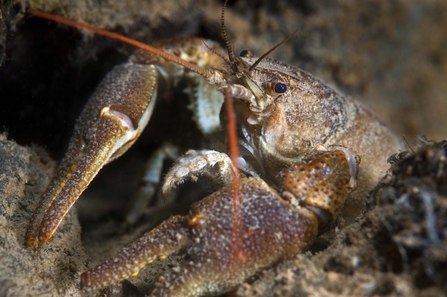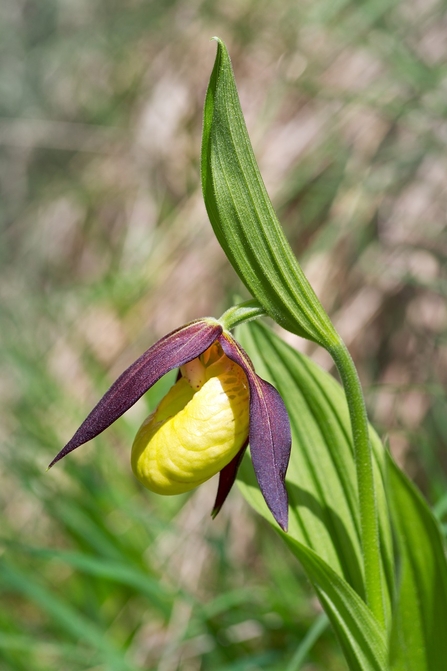For Natural England's press release, please click here.
Yorkshire Wildlife Trust are delighted to have been awarded over £280,000 by Natural England as part of their Species Recovery Programme, for the creation and restoration of wildlife-rich habitats.
This grant will go towards three projects, helping to protect and restore lady’s slipper orchids, white faced darters, and white clawed crayfish, along with the habitats in which they are found.
By focusing on these specific species, we intend both to preserve some of Yorkshire’s natural heritage and support a whole host of other species that rely on the habitats we are restoring.
Martin Slater, Deputy Chief Executive at Yorkshire Wildlife Trust, said,
‘We are delighted to receive this funding from the Species Recovery Programme for native white-clawed crayfish, the rare and beautiful lady’s slippers orchid, and the white faced darter, a rare and threatened dragonfly. Plans and ambitions we’ve had for a long time can now flourish as we restore and reintroduce rare or near-extinct species across north Yorkshire and beyond.
Our nature reserves and protected wild areas are at the forefront of the challenge to keep many species from disappearing, and are the vital building blocks of a network for nature’s recovery. Projects like ours, saving species and building habitats, allow not just these keystone plants and animals to return to our wild places but others too - turning the tide for Yorkshire’s wildlife, and wild places.’
Sadly, the loss of biodiversity in Yorkshire – and across the UK - has led to habitats and species disappearing or degrading. We’re working hard to turn the tide not just for these rare and enigmatic species but for wildlife on our reserves, upland areas, the coast and our neighbourhoods and gardens.
Yorkshire is a vitally important contributor to the biodiversity of the UK. Our county supports two-thirds of British flora, around 60% of British moth and butterfly species, and around 70% of British breeding bird species. Of these, nearly 300 are species of national conservation concern and around 130 have a particularly large part of their British distribution in our county, making Yorkshire important custodians of our wildlife.
However, Yorkshire is not unaffected by the biodiversity crisis. We have seen species extinctions in Yorkshire and continue to experience species declines, particularly of national rarities. 17 plant species have gone extinct in Yorkshire since before 1970, and 1 in 4 plant species and 7% of our macro moth species have declined since 2000. In spite of our wealth of bird life, 35% of our breeding bird species have also experienced a decline in their distribution between 1990 and 2010.
Our wildlife sites and protected areas are working to keep many species from disappearing, but they are too few and far between. As a result, projects such as these are absolutely vital to continue bolstering the diversity of our incredible county, and working to turn the tide against species extinction.
We are delighted to be working with a number of partners across these projects, who are outlined in greater detail below. As it is still early on in the process for a number of these projects, we look forward to sharing more news on how they are progressing going forward!
Yorkshire Wildlife Trust projects
Dragons in the Dales
The white-faced darter is a dragonfly species which is at home on lowland peatbogs. They thrive in acidic bog pools, where the females lay their eggs into feathery bog-moss. Sadly, white-faced darters have seen drastic declines in England and are listed as Endangered in the British Odonata Red List 2008 due to habitat loss, pollution, and the drainage of their peatlands. There are now only a handful of sites in England where they are found, and they are extinct in Yorkshire.
However, restoration projects such as Yorkshire Peat Partnership (led by Yorkshire Wildlife Trust) has brought nearly 43,000 hectares of peatlands into restoration management. During restoration works, we noticed that the resulting bog pools attract wildlife, such as dragonflies and damselflies, which use the still water to breed. As a result, we aim to reintroduce the white-faced darter darter to lowland raised bogs in the Yorkshire Dales. We will survey likely to sites to assess the habitat quality, which will inform appropriate restoration such as sphagnum planting to make the selected bog(s) ready for the release of the dragonflies. The habitat enhancement work will also benefit other declining dragonfly species such as black darter and common hawker.


